Signing and wayfinding is part of the Sustrans traffic-free routes and greenways design guide. It covers the importance of treating signing as an integral part of the design process, signage consistency, legibility and maintenance and the need for designers to be sensitive to the environment.
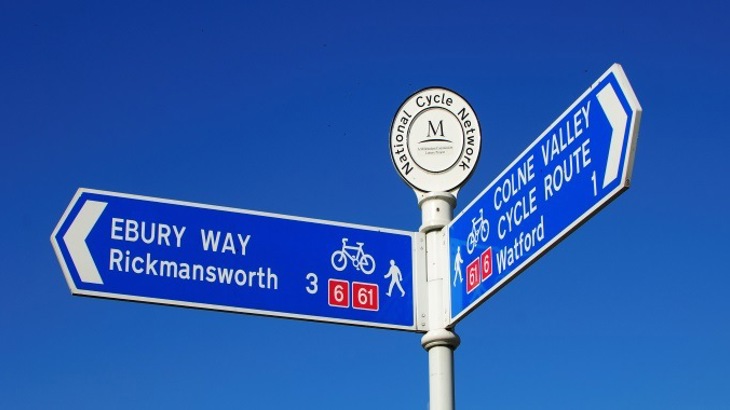
Key principles
- Signing and wayfinding is an important element of traffic-free routes and should be treated as an integral part of the design process.
- Signing should be consistent and legible throughout a route or network. It must present the correct information to users.
- Signing and wayfinding features need maintaining.
- Signing, wayfinding and street furniture can all serve to create clutter. It is important to consolidate and rationalise signing along routes where possible.
- The approach to introducing these features needs to be sensitive to the environment.
5.1.1
The Traffic Signs Regulations and General Directions 2016 (TSRGD) apply to all signs positioned within the public highway. The regulations ensure that signs are consistent, legible and provide a clear message to road users.
This consistency is achieved by using a standardised palette of colours, symbols, text sizing and sign shapes. In most cases, traffic-free routes will be located outside of the public highway boundary and the requirements of the TSRGD will not apply.
5.1.2
Whilst the requirements of the TSRGD will not apply to most traffic-free routes, many route users will be familiar with the format of signing within the highway environment. Designers should therefore consider the benefits of adopting the style and format of TSRGD prescribed signing.
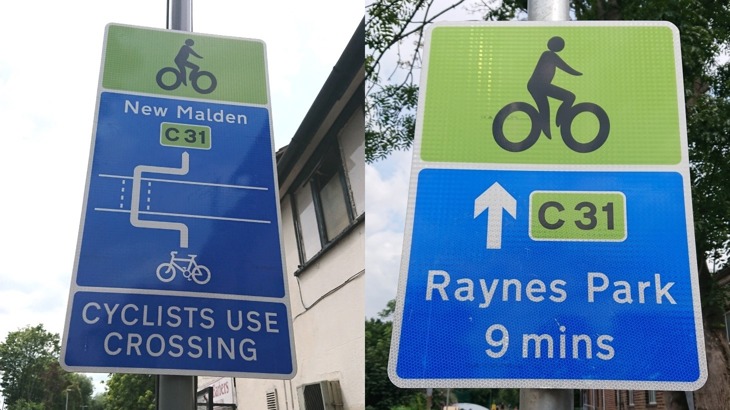
Signing that adopts the general principles of TSRGD, New Malden Raynes Park, London.
5.1.3
Comprehensive destination signing is key to the provision of safe and attractive places to walk, wheel and ride. Traffic-free routes should be signed at each end and at destinations and links along the route.
Users should be directed to routes from the wider walking and cycling network in an area, using a consistent signing strategy. On this basis, the introduction of a traffic-free route may result in signing updates on surrounding routes.
Wayfinding features are present throughout urban areas and the highway network. These can include roads, bridges, buildings and landmarks. Routes situated away from the highway network or urban areas do not always benefit from these wayfinding features. Making it easy to become disorientated.
Wayfinding signing along a route is the main solution to addressing the absence of physical wayfinding features. Displaying road names on bridges passing over a route is another method of enhancing wayfinding along a route.
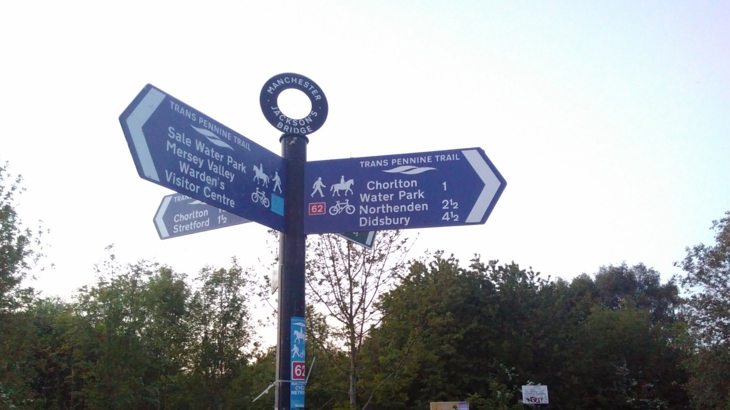
Wayfinding on Trans Pennine Trail, Manchester.
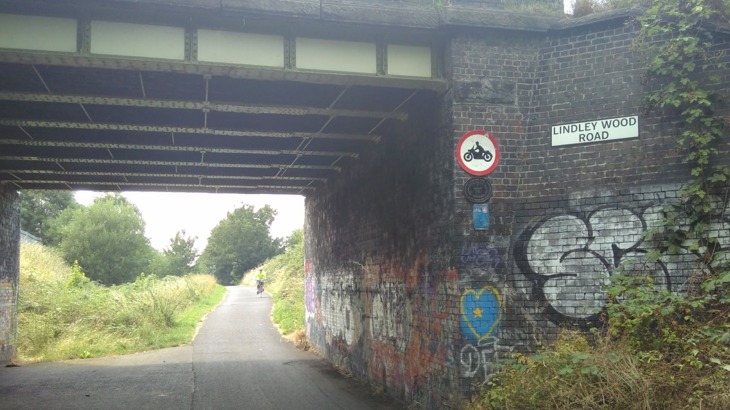
Road name sign on bridge, Fallowfield Loop, Manchester.
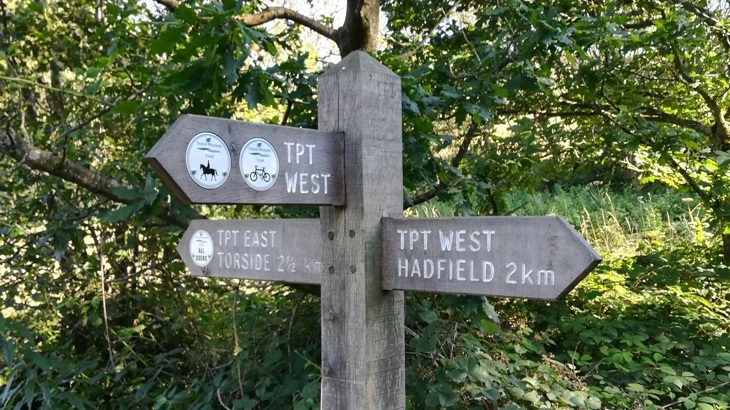
Wayfinding Signing on Longdendale Trail, NCN Route 62.
5.1.4
Reducing sign clutter along a route minimises the amount of information path users have to process. This can help to emphasise the messages of signing.
Too many signs situated within natural environments could serve to detract from the aesthetic of a route. It is important to find a balance between providing enough signing to ensure a route is coherent, without eroding its aesthetic appeal.
5.1.5
Creating a route identity can be beneficial in encouraging community participation and ownership. Where a route takes on an identity, it can be helpful to use this as a platform to create a brand.
The brand can then be applied to features along the route, such as signing and street furniture. Examples of branded routes include The Way of the Roses, The Caledonia Way and The Nickey Line.
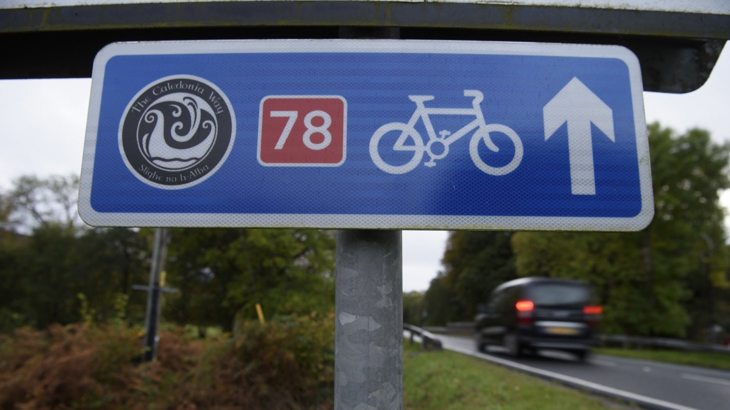
Branded Directional Signing on The Caledonia Way, Scotland.
5.1.6
How routes fit into a wider transportation context is an important consideration. In remote areas, with high levels of leisure use, signing to public transport facilities may be beneficial. For urban routes with a utility function, it may be more important to sign connections to the wider cycling network.
5.1.7
Distance or time to destinations can be provided on signs. The TSRGD does not permit the use of both distance and time on the same sign within the highway environment. It is recommended that this approach is also adopted for traffic-free routes. However, it is down to the professional judgement of the designer to determine the most suitable approach.
On an urban route that has high utility use, time to destinations may be the most appropriate approach. For longer distance recreational routes, a distance to destinations may be more appropriate, as those cycling at their leisure are likely to be less time-pressured to reach their destination.

